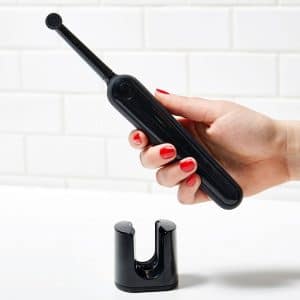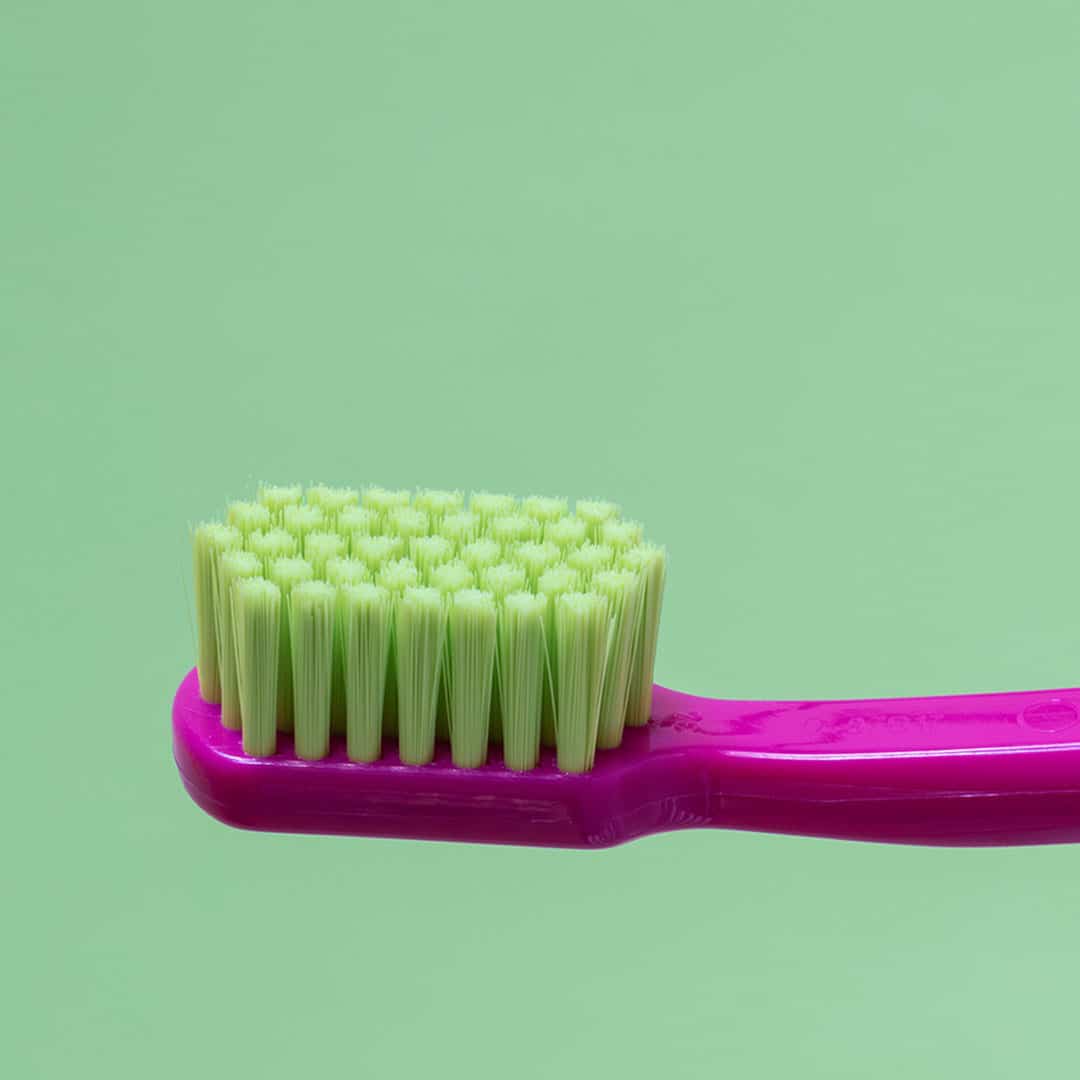Orthodontic care is ultimately about strengthening people’s relationships with their smiles. And this can’t be done without also improving their relationships with their toothbrushes. One of the first things that you’ll learn as a new braces-wearer will learn is that this cleaning implement is your new best friend.
When you wear braces, oral hygiene is extremely important in keeping your treatment on track and avoiding problems. Your orthodontist will give you instructions on how to brush and floss your teeth while the braces are on, and these directives should be taken seriously.
If you are wearing traditional metal brackets, failure to brush adequately around each bracket can lead to some surprising stains when the braces come off. And even if you’re outfitted in removable aligners, the trays trap bacteria that are able to multiply at alarming rates, which could require a post-braces trip to the dentist’s chair to receive a cavity filling or two if proper preventative steps are not followed throughout treatment.
But the mechanics and frequency of your brushing habits are not the only things you need to be conscientious about. It’s important that you also care for the health of your toothbrush. The purpose of the toothbrush is to help your teeth stay clean, so a toothbrush that is dirty or ineffective won’t quite do the trick–especially not over a long period of time.
Choosing a high-quality toothbrush and cleaning it regularly are essential to good toothbrush maintenance.
Choose A High-Quality Toothbrush
It is tempting to go for the most inexpensive toothbrushes while you are wearing braces, since the metal and wire will wear out the bristles more quickly and you’ll need to replace your toothbrushes more frequently than usual. However, even if the number of toothbrush purchases goes up, try to avoid their quality going down. It is important to continue to use a high-quality toothbrush while you have braces. You may want to ask your orthodontist for her recommendation before purchasing a new type of toothbrush or changing your routine.
When selecting a toothbrush, consider the size of the head in relation to the size of your teeth and mouth. The head of the toothbrush should allow you easy access to all surfaces of your teeth. For most adults, a toothbrush head that is a half-inch wide and one-inch tall will be the easiest to use and the most effective. Though there are larger toothbrush heads available, you may find that it is difficult to maneuver them to clean hard-to-reach areas, such as the sides and backs of your molars. This is especially true if your teeth are equipped with orthodontic apparatuses. The toothbrush also should have a long enough handle so that you can comfortably hold it when you brush.
The bristle strength on your toothbrush is also important to consider while you are wearing braces. Oftentimes, orthodontic patients will increase bristle strength, thinking that a firmer brush is needed to clean around brackets and wires. However, a soft-bristle toothbrush is perfectly effective at cleaning your braces if used correctly. So if you are most comfortable with a softer bristle, there is no need to make any changes. In fact, for the vast majority of people, a soft-bristled toothbrush is the most comfortable choice and healthiest for the teeth and gums. Depending on how vigorously you brush your teeth and the strength of your teeth, medium- and hard-bristled brushes could actually damage the gums, root surface, and protective tooth enamel.
If you want to enhance the effectiveness of your brushing experience, opt for bristles with rounded tips. Many professionals also recommend using a toothbrush with bristles that are in a subtle “V” shape, with the middle bristles being lower than the outer bristles. This pattern will give you more range and help you access hard-to-reach places on and around your teeth.
Consider An Electric Toothbrush
If you want a toothbrush option that will necessitate fewer replacements, an electric toothbrush can be a great choice for getting your teeth clean while in braces. Keep in mind that the duration of brushing and mechanics of using an electric toothbrush are not different from a manual brush, so don’t purchase an electric toothbrush with the intention to cut corners.
Electric brushes come in a variety of styles with different

appliances, so your orthodontist can help you decide which brush is right for you. Battery-powered toothbrushes usually run on AA batteries, and rechargeable models usually feature a base that plugs into an outlet in the wall. Battery-powered toothbrushes are the less expensive option, typically ranging between $5 and $25, while rechargeables can range anywhere from $50 to $300.
Electric toothbrushes offer many features, such as timers, pressure sensors, travel cases, multiple brush heads and adjustable settings. Typically the cost will be higher with a larger number of features. Decide which of the available brush features are most important to you. If you have never used an electric toothbrush, it might be best to start with an inexpensive model so that you can see if you prefer this method of brushing.
If you need help comparing and contrasting options, there are many recommendations online, including this article from Verywell Health. Their list includes both electric and manual brushes, and it recommends a best overall brush, best brush for a budget, best brush for braces, best brush for kids, best brush for receding gums, best brush for sensitive teeth and best electric toothbrush. Again, if you’re overwhelmed with the options, simply talk to your orthodontist.
Replace Your Toothbrush Regularly
You rely on your toothbrush every day to remove built-up plaque from your teeth and gums. That ability will be compromised if the bristles are frayed or misshapen, which inevitably will occur over time as an outcome of regular use.
The American Dental Association recommends replacing your toothbrush every three to four months. However, if you are wearing traditional braces, the metal brackets and archwire will wear the toothbrush faster, so you might need a new toothbrush more frequently. If you notice that the bristles are frayed, it’s time to replace the toothbrush.
Bristle effectiveness is not the only reason that your toothbrush should be swapped regularly. Millions of bacteria settle on your toothbrush, and after they build up over time you are defeating the point of brushing by using a toothbrush that is unsanitary.
If you are sick, some orthodontists recommend replacing your toothbrush when you feel better. There’s no scientific evidence that continuing to use the toothbrush will cause further illness, but there is a potential oral hygiene issue, as the toothbrush has been flooded with additional bacteria.
Clean Your Toothbrush
It’s important to clean your toothbrush after each use. Yes, this means after every single time you brush. However, cleaning a toothbrush is as simple as rinsing it with water. Some people prefer to rinse their toothbrush with mouthwash, although there’s no evidence that this works any better.

Rinsing your toothbrush removes some of the bacteria that was transferred from your mouth, as well as any remaining toothpaste and food debris that stuck to the bristles.
After you’ve rinsed the debris from the brush, it is important that you allow the toothbrush to air dry. To facilitate this, it is best to store it upright in a toothbrush holder. Do not store the toothbrush in a closed container as it needs remain exposed to the air to prevent mold or mildew from forming. If you are storing more than one toothbrush in the same location, make sure the bristles are not touching.
Also, for hygiene purposes, you should never share your toothbrush. If two people use the same toothbrush, they are sharing a lot more than saliva. If one of you has any infectious microorganisms floating around, they will transfer via the toothbrush.
Your toothbrush is one of the few instruments you own that gets such frequent use. It’s important that you choose a toothbrush that’s most effective for your mouth and then care for it properly by rinsing and air drying it after each use. Replace your toothbrush regularly to ensure it performs optimally.



